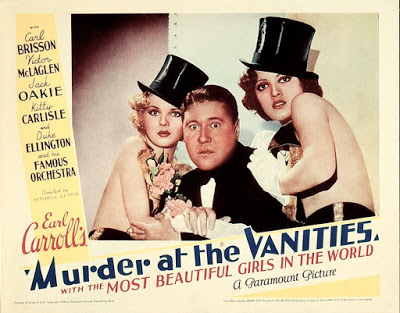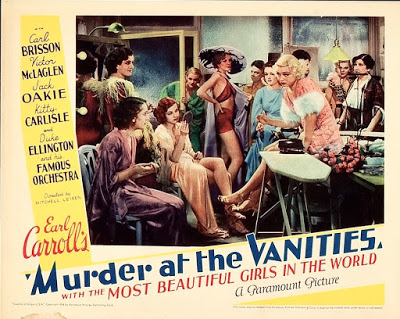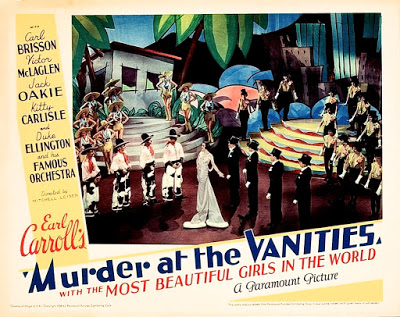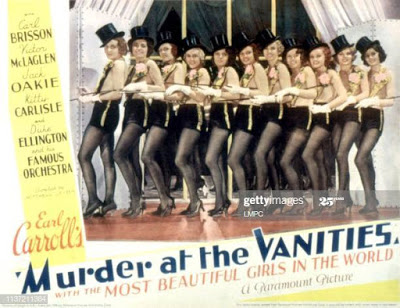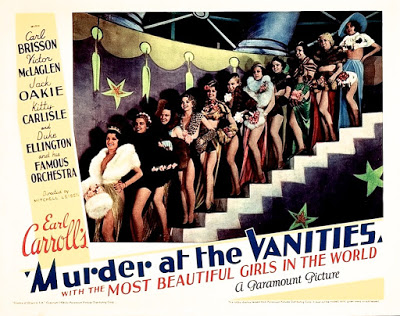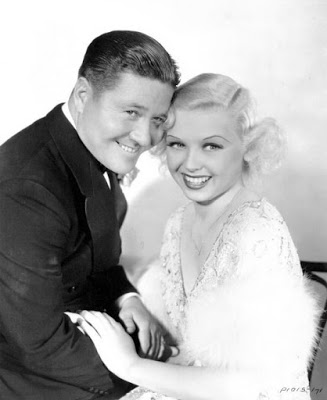Murder at the Vanities
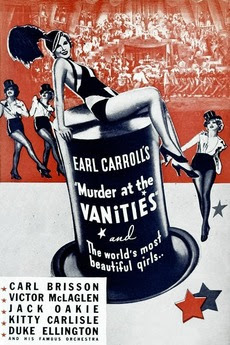
Director: Mitchell Leisen
Year: 1934
Rating: 7.5
When this film was released it was trashed by the critics but it has aged
fine like a well-oiled society dame over the years as has the reputation
of director Mitchell Leisen, who for many years was basically forgotten until
the video age. He has some great films to his name. This film is wonderfully
gauche and underdressed but a nostalgic kick in the pants for when dialogue
was snappy and smart-ass, plots moved like an out of control drunk driver
and women were lovely shiny ornaments. It was made right before the Production
Code was strictly put into place and Paramount which was always on the edge
of insolvency in those days, must have decided what the hell - throw it all
in there - sex, drugs and ponderous romantic ballads. It may not be a good
film but it is perpetually entertaining. It is basically a backstage Busby
Berkeley musical without Busby but with a couple of killings. All in one
night and all during the performance. So there is music, murder and mystery
and 100 woman in various stages of undress.
The costume designer Travis Banton should have gotten some sort of Oscar
for using the least amount of material possible to cover women up and not
be thrown into jail - though it was probably actually Leisen who was behind
it. That is how he started off in the business designing costumes first and
then sets and is thought to have done that on most of his films. He took
these skills off the set and designed people's homes and gowns. He has been
accused of being primarily a visual artist and nowhere more than here. Nearly
the entire film is shot in the theater - either on the stage or the labyrinth
of backstage rooms, the wings, hallways and catwalks and make them all part
of a moving intricate puzzle.
The murders are pretty basic but doing them during the performance and the
performance continuing to go on as the murders are investigated by the gruff
slow thinking Lt. Murdoch. He wants to shut the show down but the manager
keeps talking him out of it. So the film keeps flipping from the investigation
to the musical numbers on the stage - the full number - within a real stage
setting. There were a bunch and admittedly the music has not aged as well
as the film - very old fashioned crooning love songs - with one wonderful
exception - a number by a very young looking Duke Ellington and his band.
But no one is paying much attention to the music anyways - the audience came
to see the girls - 100 of them supposedly though I never counted them. Every
wannabe actress in Hollywood must have been there - a happy casting director
- though a few like Lucille Ball, Ann Sheridan went on to fame as did two
chorus boys - Alan Ladd and Dennis O'Keefe. Not that I was able to pick them
out - so good luck. The costumes range from lavish to practically nothing
at all - in one scene a few women are covering their bare breasts with their
hands until blood from one of the killings begins to drip on one of them
from above - she yells, lifts her hands and the camera pans up very quickly.
Even now with all that we have seen in movies seeing this in black and white
from the 1930's feels a little bit shocking. In a delightful way. Oh, and
lets not forget the paean to marijuana in a number called Sweet Marijuana.
None of this stuff had a chance in hell of getting into a film after 1934.
Though the real talent was the extras as it turned out, there is some in
the main cast as well. Kitty Carlisle is the leading lady and doesn't show
a whole lot of pizzazz though she was a professionally trained singer. She
never really found her way in film but did in the theater. But people of
my generation mainly know her from the quiz shows she was on in the 1960's
- mainly on What's My Line as one of the panelists for years. The male lead
is a stick in the mud as well - Carl Brisson from Denmark who didn't last
long in the film business for good reason. But the side players are terrific
- Jack Oakie as the manager and Victor McLaglen as the detective who are
like two bulls trying to out act and out shout one another.
Jessie Ralph as the old wardrobe lady could stop a runaway truck with one
look and the villainess of the piece is the hard as razor edged steel Gertrude
Michael whose career ended up at the bottom of a bottle. The female private
detective is played by Gail Patrick - she was in a fair amount of films but
it was as Gail Patrick Jackson that she hit it big as the producer of the
Perry Mason Show. And finally - the little cutie blonde who keeps popping
up to ask Oakie something and he keeps brushing her off is the adorable Toby
Wing. Someone on FB keeps posting photos of her and I had no clue who she
was - now I do, now I understand why he does - she was as sexy a sparkplug
as you can find in 1934. In the end of the film, she makes it clear that
she is available to Oakie for a little romper room and he just pauses and
looks right at the camera and smiles. The fadeout.


